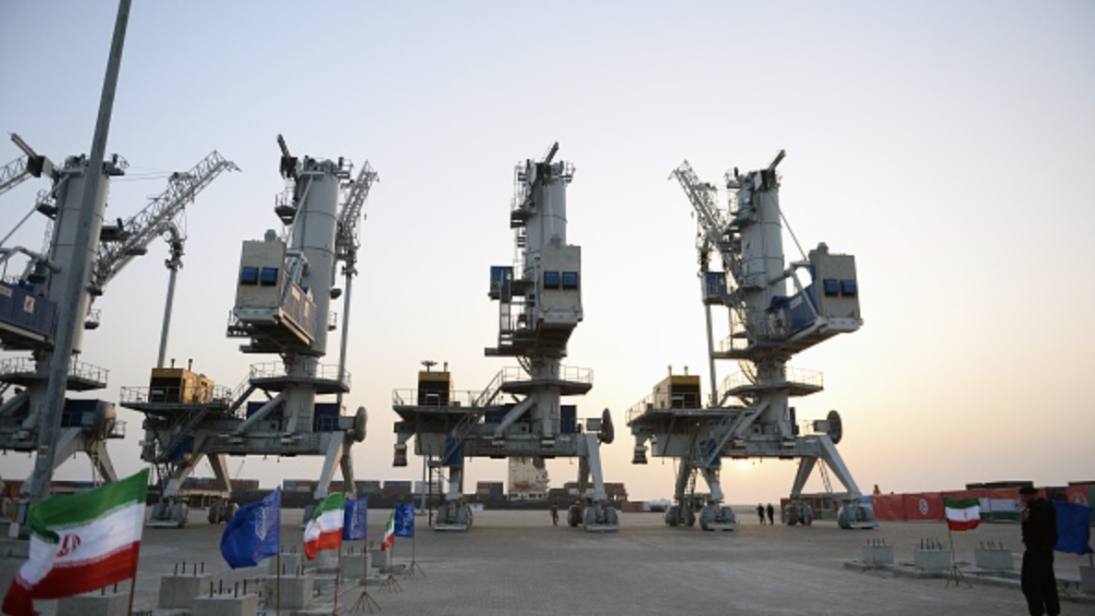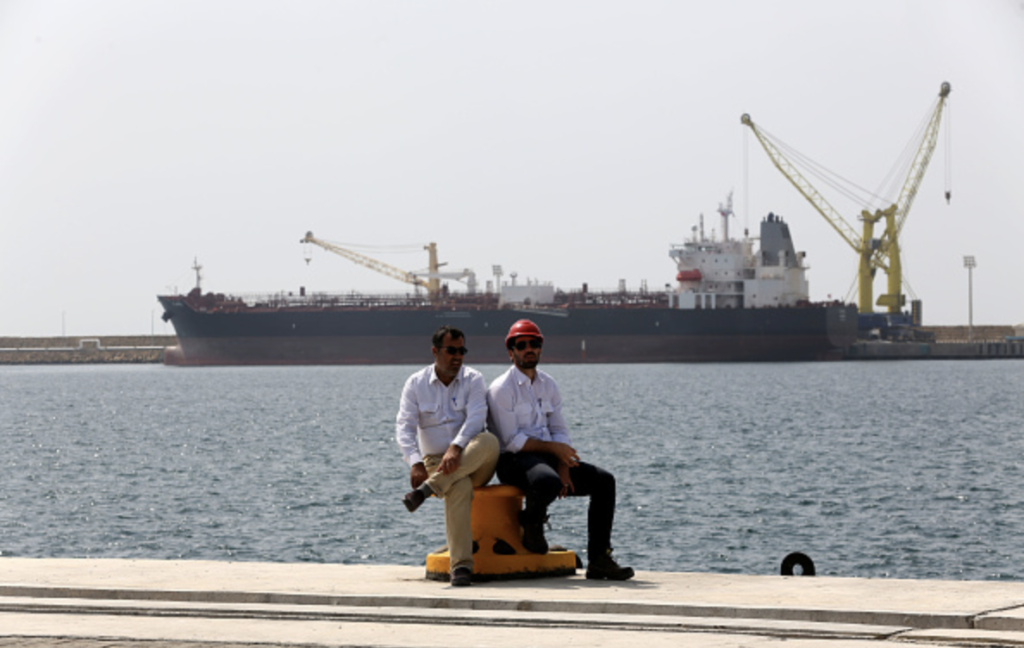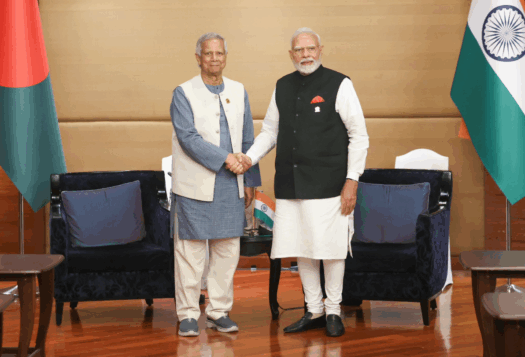
Five years have passed since the Chabahar port in Iran was promised a new lease of life with both the U.S.-Iran nuclear deal in 2016 and an assurance of investments from India. Chabahar is operational today but remains quite a way off from its original vision as a result of the Iran-U.S. rivalry, the reimposition of U.S. sanctions, and the less overt, complicated working relationship between Iran and India. The port’s journey has been, simultaneously, a story of a project overcome with difficulties and one that is being slowly steered by Iran and India towards a stated, but altered, end.
Birth Pangs
Chabahar is located in Iran’s southeastern province of Sistan-va-Baluchestan, one of the country’s most underdeveloped regions. Unlike Iran’s busiest port, Bandar Abbas, Chabahar is a deep-sea port outside of the Strait of Hormuz with direct access to the Indian Ocean. This implies the port’s commercial activities remain unaffected if the strait is shut down. Routing more trade through this port would also save Iran significant fees spent in Dubai, a major re-export hub for its goods.
The development of Chabahar into a trade and transhipment hub was first raised by Iranian President Mohammed Khatami during his visit to India in 2003. For India, the port and its connecting routes through Iranian territory represent an easier route into Afghanistan because it allows India to bypass Pakistan, which has denied similar land access. Both India and Iran also want Chabahar’s inclusion to the International North-South Transport Corridor (INSTC), a multimodal network that would halve transit times and cut carriage costs by almost 30 percent to Central Asia, the Caucasus, and Russia.
Chabahar is operational today but remains quite a way off from its original vision as a result of the Iran-U.S. rivalry, the reimposition of U.S. sanctions, and the less overt, complicated working relationship between Iran and India.
It would take another decade before the proposal took off at the sidelines of the Non-Aligned Movement summit hosted by Iran in 2012—the same year the United States imposed unilateral sanctions on the country. The Obama administration expressed its displeasure with the summit but signalled its tacit support for the port, terming it essential to Afghanistan’s economic stability. Following the Iranian nuclear deal in 2016, India signed a contract committing USD $85 million with Iran to upgrade two terminals at the Shahid Beheshti port of Chabahar, promised credit lines worth USD $150 million and agreed to invest in the port’s free-trade zone and improve trilateral connectivity with Afghanistan.
The thaw in U.S.-Iran relations was short-lived. The election of Donald J. Trump later that year resulted in a U.S. withdrawal from the nuclear deal and a “maximum pressure” campaign with a cascade of sanctions. The disconnect between the project’s ambitions and realities widened as a result.
One Step Forward, Two Steps Back
The pressures faced by the port were numerous. First, the Iran-U.S. conversation soured following Trump’s election. In the world of sanctions, talk is never cheap. The mere threat of secondary sanctions, which put pressure on third countries to stop activities with Iran, scares foreign banks and companies away as they risk losing access to the U.S. financial system, thereby imposing costs on the project. This limited the financing options available for Chabahar’s development. European and Indian firms that previously showed interest in either selling equipment or operating the port complex reconsidered their involvement. It drove the Indian state entity overseeing Chabahar’s development—India Global Ports Limited (IGPL)—to award a contract (later rescinded) to a Chinese crane supplier blacklisted in India.
Second, India—a close partner of the United States—was forced to pause and re-strategize on Chabahar since Washington’s support was critical to countering China’s growing economic and military footprint. India stopped Iranian oil imports to signal its willingness to work with Trump in return for an assurance that Chabahar was off the table when it came to sanctions. The Modi government ended up not spending funds on the project between 2017-19 as it came to terms with a disruptive and transactional Trump administration. The port was ultimately granted a sanction waiver by the United States, but this did not improve investor confidence in the port.

Third, these setbacks further inconvenienced an already difficult working relationship between Iran and India. Setting aside the buyer-seller energy relationship and notable cooperation in the early 2000s to overthrow the Taliban in Afghanistan, their bilateral track record, particularly on the economic side, has been modest at best. Proposals to develop the Farzad B gas field or the much older Iran-Pakistan-India pipeline failed to take off after bitter negotiations that spanned decades. Even on Chabahar, senior Indian officials publicly expressed frustration over Iran changing terms in “very fundamental ways” at least three times between 2016-18. New Delhi’s decision to go slow upset Tehran, which threatened to eject India from associated projects, such as the proposed railway route connecting Chabahar to Afghanistan.
Ultimately, Iran and India made do with what they could. Iran upgraded and inaugurated the first phase of the port’s extension in 2017, which increased its capacity from 2.5 million tons to 8 million tons of cargo a year. India’s IGPL took over interim operations in 2018 with an Iranian firm at the helm through a short, 18-month contract while working its way through obstacles to equip the port. It may be granted a ten-year extension later this year when it potentially takes on full-scale operations.
Chabahar’s Place in Eurasia
In March 2021, ministers from India, Iran, Afghanistan, Armenia, Kazakhstan, Russia, and Uzbekistan gathered virtually to commemorate “Chabahar Day.” The summit captured what is now crucial to the project’s viability: greater regional buy-in.
Plans to plug Chabahar into regional transit networks show progress. Iran, India, and Afghanistan are finalizing protocols to regulate roads, customs, and consular matters. Since 2018, multiple shipments of wheat from ports on India’s western coast have reached Afghanistan through these routes. They have also established international standards to expedite the addition of these routes to the INSTC. A third framework under consideration is the “Ashgabat Agreement,” which would connect the Persian Gulf to Central Asia. Oman and Uzbekistan, in particular, have shown interest in improving maritime connectivity through Chabahar.
Regional buy-in has not been all smooth sailing. Each of these countries has had to explore the extent to which they are willing to negotiate their interests amidst U.S. sanctions. Kazakhstan, for instance, reconsidered its participation in 2019 after initial enthusiasm. A second challenge is the evolving, precarious security situation in Afghanistan with the Taliban making gains as U.S. troops withdraw. A third consideration is the impact of the COVID-19 pandemic on these economies and their ability to recover and ramp up bilateral and multilateral trade through connectivity networks going forward.
The port’s progress, as detailed above, has been slow but steering towards a stated end, despite numerous setbacks. Through it all, Iran, along with India, are betting big on the region’s collective investment in Chabahar’s success.
So far, 123 vessels and 1.8 million tons of bulk and general cargoes have passed through Chabahar between February 2019 and January 2021. With 0.5 million tons between December 2018-December 2019 and an aggregate 1.2 million tons between December 2018-September 2020, we can safely estimate that around one million tons were handled by the port in the year 2020-2021 alone. This figure is already en par with the cargo throughput eventually expected at Chabahar’s older sister port, Gwadar, in Pakistan that is part of the China-Pakistan Economic Corridor. Iranian officials expect Chabahar’s capacity to increase to 30 million tons with the participation of Central Asian countries and links to both Gwadar and Karachi. The latter is not surprising because the Iran-India relationship is fundamentally different from the China-Pakistan relationship in both power dynamics and patronage.
On China, its cooperation agreement with Iran in 2020 raised fresh questions regarding whether Beijing would compete with India at Chabahar. Chinese investments averaged a steady USD $1.8 billion per year between 2005-2020. It is worth asking why, given such presence, it did not invest in Chabahar earlier. China, like India, has been cautious given secondary sanctions. For instance, Beijing signed a memorandum in 2018 to develop a petrochemical park in Chabahar’s free trade zone but has yet to follow through. Since India has no exclusive rights to the port, it is only a realistic assumption that Chinese investments or shipping lines may make their way there at some future point to fuel Chabahar’s growth.
Chabahar has modest ambitions given its realities. The Biden administration is in no hurry to ease sanctions and Ebrahim Raisi’s election to the Iranian presidency does not change the port’s strategy. Its development remains as critical as before in order to generate much-needed employment and economic benefits to an underdeveloped region of Iran. The port’s progress, as detailed above, has been slow but steering towards a stated end, despite numerous setbacks. Through it all, Iran, along with India, are betting big on the region’s collective investment in Chabahar’s success.
Editor’s Note: This article is part of a four-part South Asian Voices series, “The Geopolitics & Connectivity in South Asia.” In this series, contributors explore four core infrastructure projects: Gwadar and Chabahar port, the Turkmenistan-Afghanistan-Pakistan-India pipeline, and the International North-South Transport Corridor. Read the full series here.
***
Click here to read this article in Urdu.
Image 1: Anadolu Agency via Getty Images
Image 2: Atta Kenare via Getty Images


